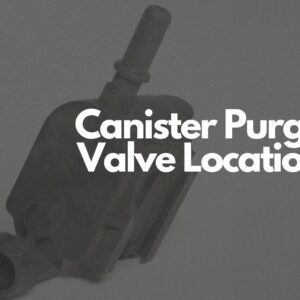Q: Where Is the Oil Control Valve Typically Located?
A: More often than not, you can find the oil control valve near the top of your vehicle’s engine on the cylinder head. Engines with variable valve timing technology (VVT) will have one oil control valve per camshaft.
The oil control valve is a crucial component in vehicles that use VVT because it regulates the supply of oil to a specific VVT hub. It either advances or slows down the valve timing by changing the position of the camshaft in relation to the driven part of the cam gear.
In other words, the chain drives the outside of the gear that spins the camshaft, and variable valve timing enables the ECM/PCM to use an oil control valve and a special gear to change the indexing between the gear and the shaft to reduce emissions and increase fuel economy.
However, remember that every vehicle is built differently, so the exact place might vary. If it’s not by the engine block, your best bet would be to consult your owner’s manual for the oil control valve’s precise location.

Tips on How to Access the Oil Control Valve
Sometimes you might need to follow a few extra steps if you want to access your vehicle’s oil control valve, but all the information you need should be in the manual. Despite this, there are some steps you should always take before trying to access the oil control valve. For example, wear gloves to protect your fingers from chemicals, varnishes, and sludge.
If the oil control valve is damaged, malfunctioning, or due for a replacement, the valve might have a lot of oily buildup that you should avoid touching with bare skin.
Any information provided on this Website is for informational purposes only and is not intended to replace consultation with a professional mechanic. The accuracy and timeliness of the information may change from the time of publication.






























